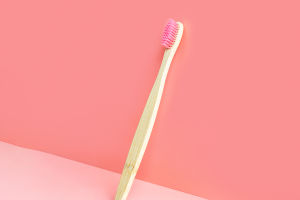Flower arranging is an art that can transform your living space, elevate your mood, and add a touch of elegance to any occasion.
Here are some essential tips to help you create stunning floral displays.
1. Choose the Right Flowers
The first step in flower arranging is selecting the right blooms. Consider the following factors:
Seasonality: Choose flowers that are in season for the freshest look and longer-lasting arrangements. Seasonal flowers are often more affordable and readily available.
Color Palette: Decide on a color scheme that complements your space or event theme. Consider using a mix of complementary and contrasting colors to create visual interest.
Variety: Incorporate different types of flowers, such as focal flowers (like roses or sunflowers), filler flowers (like gypsophila or baby’s breath), and greenery (like eucalyptus or ferns) for texture and depth.
2. Prepare Your Flowers
Before arranging, properly prepare your flowers to ensure they last longer:
Trim the Stems: Cut the stems at a 45-degree angle to increase water absorption. Make sure to trim them under running water or submerged in water to prevent air bubbles from forming in the stems.
Remove Excess Foliage: Strip off any leaves that will be below the waterline in the vase to prevent rot and bacteria buildup.
3. Select the Right Vase
The choice of vase plays a crucial role in the overall look of your arrangement. Consider the following:
Size and Shape: Choose a vase that suits the size and shape of your flowers. Tall flowers look best in tall vases, while shorter blooms work well in shorter, wider vases.
Material: Glass vases allow you to see the water and stems, while ceramic or metal vases can add an interesting texture or color contrast.
4. Create a Balanced Arrangement
A well-balanced arrangement is visually appealing and maintains stability. Follow these guidelines:
Focal Point: Start with the focal flowers, placing them in the center or slightly off-center. This will draw the eye and create a point of interest.
Vary Heights: Arrange flowers in varying heights to create dimension. Taller flowers should be placed in the back or center, with shorter flowers around the edges.
Layering: Use layers of flowers and greenery to add depth. Begin with greenery as a base, then add focal flowers and fill in with smaller blooms.
5. Keep It Fresh
To ensure your floral arrangement lasts as long as possible, keep these tips in mind:
Change Water Regularly: Replace the water every couple of days to keep it fresh. Recut the stems each time to promote water absorption.
Keep Out of Direct Sunlight: Place arrangements away from direct sunlight and heat sources to prevent wilting.
Use Flower Food: If available, add flower food to the water to provide nutrients that help prolong the life of your blooms.
6. Personalize Your Arrangement
Don't be afraid to let your creativity shine! Here are some ways to personalize your arrangements:
Incorporate Unique Elements: Add personal touches like seasonal accents (pinecones, berries, or dried flowers), decorative twigs, or even fruits for a unique flair.
Experiment with Styles: Try different styles of arrangements, such as minimalist, wildflower, or formal bouquets, to match your personality and space.
Flower arranging is a delightful and rewarding activity that allows you to express your creativity while enhancing your environment. By choosing the right flowers, preparing them properly, selecting suitable vases, and focusing on balance and freshness, you can create beautiful floral displays for any occasion. With these tips, Lykkers, you’ll be well on your way to becoming a skilled floral designer, impressing family and friends with your stunning arrangements.


